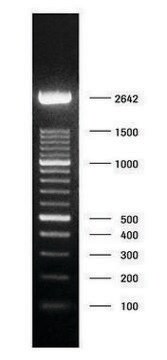11581074001
Roche
COT Human DNA
from human placenta DNA, enriched for repetitive sequences
Synonym(s):
COT Human DNA, Human DNA
About This Item
Recommended Products
biological source
human placenta (DNA)
Quality Level
grade
Molecular Biology
form
solution
packaging
pkg of 500 μg
manufacturer/tradename
Roche
concentration
1 mg/mL
impurities
HCV/HBV, none detected
HIV 1/2, none detected
color
colorless
solubility
water: miscible
storage temp.
−20°C
Looking for similar products? Visit Product Comparison Guide
Related Categories
General description
Application
Sequence
Physical form
Other Notes
Storage Class Code
12 - Non Combustible Liquids
WGK
nwg
Flash Point(F)
No data available
Flash Point(C)
No data available
Certificates of Analysis (COA)
Search for Certificates of Analysis (COA) by entering the products Lot/Batch Number. Lot and Batch Numbers can be found on a product’s label following the words ‘Lot’ or ‘Batch’.
Already Own This Product?
Find documentation for the products that you have recently purchased in the Document Library.
Customers Also Viewed
by High-throughput Imaging
Our team of scientists has experience in all areas of research including Life Science, Material Science, Chemical Synthesis, Chromatography, Analytical and many others.
Contact Technical Service






